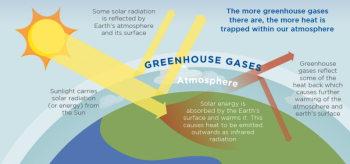

These consequences of climate change are affecting our health, damage ecosystems as well as food production in large areas of the world's agricultural fields. Increased levels of carbon dioxide and temperature contribute to increased food insecurity. According to the United Nations Foundation, "Overall, every degree of heating is expected to decrease yields of crops, productivity, and production of livestock globally, while food demand is continuing to rise" (Brook & Schwartz, 2020, p.3). Worse, food and water problems due by climate change may have far-reaching consequences for humanity, including poverty, war, and migration. Temperatures rise, and thermal tolerances decrease when hypoxia increases. According to (Altieri & Gedan, 2015, p. 4), increased temperature reduces the supply of oxygen while rising demand, a toxic combination that can swiftly induce stress, death, and on a deeper level, push a natural system to collapse.
According to (Climate change and its effects, 2023,
p. 1), emissions of greenhouse gases produce higher temperatures, extreme
droughts, destroying fires, and floods, shortages of water, increasing rising
seas, melting the poles, horrible storms, and decreasing biodiversity on Earth.
For example, the Ayles Ice Shelf completely melted in August 2005, whereas the
Markham Ice Shelf split apart in 2008 (Brook & Schwartz, 2020, p. 2).
Also, 94% of death zones are located in areas where
temperatures are expected to rise by a minimum of 2 °C by the end of the century
(Altieri & Gedan, 2015, p. 1). In addition, Lake Mead levels, which supply water
to millions of citizens, have reached their lowest point in the 1930s (Yar,
2021, p. 1). Furthermore, approximately 80% of the world's glaciers, including
permafrost and the ice caps of the polar regions, are fast decreasing, along
with the snow on Kilimanjaro as well as other tropical mountains, lakes that are
getting smaller, the ocean's level increasing, and flooding, covered islands,
changes in air directions, disease spread, and disaster for the environment
(Brook & Schwartz, 2020, p. 1).
So, how much big will these negative impacts have on our lives, the environment, and society?